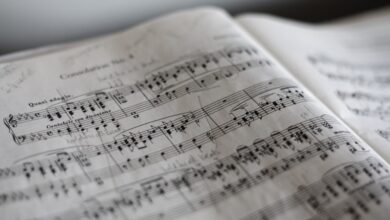Percussive Poetry: The Story of the Djembe Drum

Have you ever experienced the mesmerizing power of the djembe drum? This extraordinary instrument, originating from West Africa, carries with it a rich history and an undeniable rhythmic allure. Let’s delve into the captivating story of the djembe drum and discover why it has become a symbol of cultural expression.
The djembe drum traces its roots back to the ancient lands of Mali and Guinea. Crafted by skilled artisans, this hand drum embodies the essence of African traditions and spirituality. Its unique hourglass shape, with a goatskin head stretched over a wooden body, produces a distinctive sound that resonates with both depth and clarity.
But the djembe is more than just a musical instrument; it is a vessel of communication. In traditional African communities, the beat of the drum serves as a language, conveying messages, stories, and emotions. It is said that the djembe can mimic the human voice, expressing joy, sorrow, celebration, and even warnings. Each stroke of the drum speaks volumes, connecting individuals and communities in a profound way.

One cannot overlook the djembe’s immense versatility. From ancient rituals to modern performances, this drum has transcended boundaries, captivating audiences worldwide. Its infectious rhythm invites people to dance, moving their bodies in sync with the pulsating beats. Whether in intimate gatherings or grand concerts, the djembe’s vibrant energy fills the air, igniting a sense of unity and shared experience.
Moreover, the djembe drum has found its place in contemporary music genres such as jazz, fusion, and world music. Renowned musicians embrace its raw power and incorporate it into their compositions, adding a touch of African authenticity to their soundscapes. It has become a symbol of cross-cultural collaboration, bridging gaps and fostering understanding among diverse musical traditions.
The djembe drum carries within it a profound story of cultural heritage, human connection, and rhythmic expression. Its powerful sound and captivating aura continue to resonate across time and borders. So, next time you hear the enchanting beat of a djembe drum, allow yourself to be swept away by the percussive poetry it offers, and let the music transport you to the heart of Africa’s vibrant traditions.
Rhythmic Resonance: Uncovering the Rich History of the Djembe Drum
In the vast tapestry of musical instruments, few possess the captivating power of the Djembe drum. This mesmerizing instrument, with its ancient roots and rhythmic resonance, has a rich history that stretches back through the annals of time. Let us embark on a journey to unveil the captivating story behind the Djembe drum.
Originating from West Africa, specifically Mali, Guinea, and Burkina Faso, the Djembe drum holds deep cultural significance for the indigenous communities of these regions. Handcrafted with meticulous care, this goblet-shaped drum is traditionally carved from a single piece of hardwood and topped with animal skin. Its striking design not only produces unique tones but also serves as a testament to the skill and craftsmanship of the artisans who create it.
The Djembe drum is more than just an instrument; it embodies the spirit of communal celebration and communication. Through its mesmerizing beats and pulsating rhythms, it has played a central role in various cultural ceremonies, rituals, and social gatherings throughout history. From joyful weddings and harvest festivals to solemn funerals and initiation rites, the Djembe drum weaves its magical spell, uniting people in celebration or providing solace during times of mourning.

One remarkable aspect of the Djembe drum lies in its versatility. It can produce a wide range of sounds, from deep bass notes that resonate like thunder to sharp slaps akin to cracking lightning. Such tonal diversity allows skilled musicians to communicate complex messages by playing specific rhythms—a language understood by those well-versed in the art of drumming. The Djembe drum’s significance extends beyond its musical capabilities; it acts as a vessel for storytelling and cultural preservation, passing down traditions from one generation to the next.
As we uncover the rich history of the Djembe drum, we come to appreciate its influence on modern music. Its infectious rhythms have transcended geographical boundaries, finding their way into various genres worldwide. From world music and jazz to pop and fusion, the Djembe drum’s irresistible beat has left an indelible mark on the global musical landscape.
The Djembe drum is more than an instrument—it is a living testament to the spirit of unity, celebration, and cultural heritage. With its ancient origins and rhythmic resonance, this mesmerizing drum continues to captivate hearts and minds across the globe. Let us embrace the powerful legacy of the Djembe drum and join in the eternal dance of rhythm and harmony.
From West Africa to Global Beats: Exploring the Global Influence of the Djembe Drum
Introduction:
Have you ever wondered how a humble instrument from West Africa has managed to captivate musicians and audiences worldwide? The Djembe drum, with its distinctive sound and rich cultural heritage, has transcended borders and found its way into the hearts and rhythms of diverse musical genres around the globe. In this article, we will take a journey through the captivating history and global influence of the Djembe drum.
The Origins:
Originating from the Mandinka people in West Africa, the Djembe drum holds deep cultural significance. Traditionally crafted from a single piece of carved wood and covered with goatskin, it represents unity and communication within communities. Played during ceremonies, celebrations, and rites of passage, the Djembe drum is an essential part of West African culture.
Spreading Its Rhythm:
As explorers and traders traveled across continents, they discovered the mesmerizing beats of the Djembe drum. Its infectious rhythm fascinated musicians, leading to its integration into various musical styles. From jazz to pop, world music to electronic dance, the Djembe drum has left an indelible mark on global music.
Unifying Rhythms:
The Djembe drum’s unique tonal qualities and versatility make it an ideal instrument for collaboration. Musicians from different cultures and backgrounds have embraced its enchanting sound, incorporating it seamlessly into their compositions. The drum’s ability to evoke emotions and create a sense of unity among musicians and audiences alike is unparalleled.
Beyond Music:
The influence of the Djembe drum extends beyond music. It has become a symbol of cultural diversity, fostering cross-cultural connections and promoting understanding. Djembe workshops and classes have sprung up worldwide, allowing individuals to experience the joy of playing this extraordinary instrument and connect with its ancient roots.
Conclusion:
From its humble beginnings in West Africa to becoming a global phenomenon, the Djembe drum has transcended boundaries and touched the lives of people from all walks of life. Its powerful rhythms have the ability to transport us to distant lands and unite us through the language of music. As we listen to the mesmerizing beats of the Djembe drum, let us appreciate its incredible journey and celebrate the rich tapestry of cultures it has brought together, making the world a more harmonious place.
Heartbeat of Tradition: How the Djembe Drum Sustains Cultural Identity
When it comes to preserving cultural identity, few instruments are as powerful and captivating as the Djembe drum. With its rhythmic beats and rich history, the Djembe serves as the heartbeat of tradition for many African communities. But what makes this drum so special? Let’s dive into the details and discover how the Djembe sustains cultural identity.
Originating from West Africa, the Djembe drum is deeply rooted in the traditions and customs of various ethnic groups such as the Malinke, Bambara, and Susu. Its unique shape, crafted from a single piece of carved wood and topped with a goatskin drumhead, sets it apart from other percussion instruments. Each part of the Djembe carries symbolism and represents different elements of life: the wooden shell signifies the earth, the drumhead represents the animal kingdom, and the ropes symbolize the interconnectedness of humanity.
Beyond its physical attributes, the Djembe holds immense cultural significance. It serves as a means of communication, storytelling, and celebration within African communities. The rhythm produced by skilled Djembe players can convey messages, announce events, or even express emotions that words alone cannot capture. Whether it’s a joyous occasion like a wedding or a solemn ceremony honoring ancestors, the Djembe’s melodic resonance brings people together, creating a sense of unity and belonging.
Furthermore, the Djembe drum has gained global recognition and popularity. Its infectious beats have transcended borders and found their way into various genres of music, including jazz, world music, and contemporary fusion. This cross-cultural exchange not only introduces people from diverse backgrounds to the rhythms of Africa but also fosters appreciation and understanding of different cultures.
In today’s fast-paced world, where globalization threatens to erode traditional practices, the Djembe drum stands tall as a guardian of cultural heritage. The act of playing and learning this instrument is passed down through generations, ensuring that ancient traditions and stories are preserved and celebrated. By embracing the Djembe’s captivating sounds, we can bridge the gap between past and present, connecting with our roots and honoring the vibrant tapestry of human history.

The Djembe drum is much more than a musical instrument; it is the heartbeat of tradition, sustaining cultural identity through its rhythmic beats. This extraordinary instrument carries the weight of centuries-old customs and serves as a vessel for storytelling and celebration. From its humble beginnings in West Africa to its worldwide acclaim, the Djembe holds the power to unite people, transcend boundaries, and preserve the rich tapestry of our collective heritage.
Drumming Unity: Discovering the Djembe’s Role in Community Bonding
In the realm of rhythm and beats, some instruments possess a captivating power to unite communities. The Djembe, a West African drum with ancient roots, stands as a remarkable example. This article delves into the enchanting world of the Djembe, exploring its profound role in fostering community bonding and creating a harmonious collective experience.
At first glance, the Djembe may appear as an ordinary hand drum, but it holds within its wooden frame a rich cultural heritage. Originating from Mali, Guinea, and other West African countries, the Djembe has been an integral part of traditional ceremonies, celebrations, and social gatherings for centuries.
Imagine a vibrant village gathering where people of all ages come together. As the Djembe’s rhythmic beats reverberate through the air, a powerful sense of unity emerges. It is as if the drum acts as a conduit, connecting each individual on a deep, primal level. The Djembe’s distinct tones, ranging from booming bass to sharp slaps, create a mesmerizing tapestry of sound that grabs the attention and stirs the soul.
The Djembe’s ability to evoke emotion and capture the essence of communal spirit is truly remarkable. When individuals join in the act of playing the Djembe, they become part of a larger masterpiece, contributing their own unique rhythms to the collective symphony. There is no strict hierarchy or distinction between amateurs and experts; everyone’s contribution is valued, and the focus shifts from individual performance to the creation of a cohesive whole.


Drum circles, where individuals sit in a circle and play the Djembe collectively, have gained popularity worldwide. These gatherings serve as a platform for strangers to connect, transcending language barriers and cultural differences. The primal beats of the Djembe invite participants to let go of inhibitions, to surrender to the rhythm and allow themselves to be fully present in the moment.
In the presence of the Djembe, communities are effortlessly woven together through a shared musical language. The drumming experience fosters a sense of belonging, creating an environment where diversity is celebrated and interpersonal connections are strengthened.




